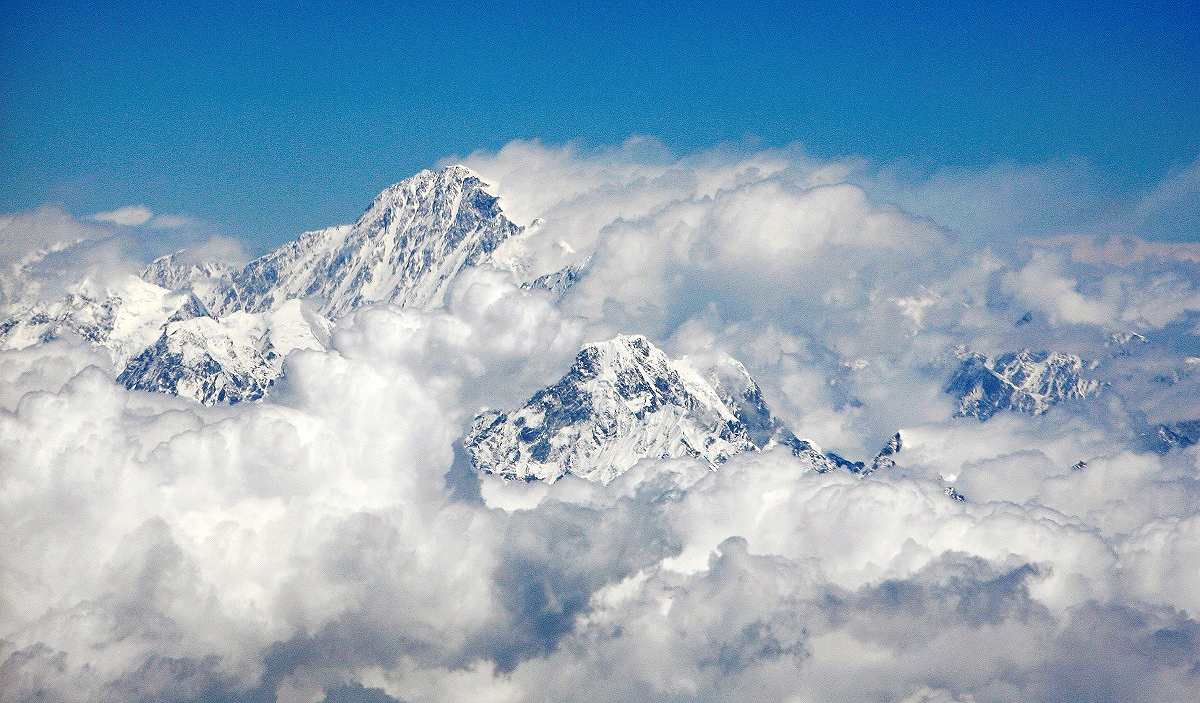
Mt. Everest is seen in April 2007.
17:51 JST, October 10, 2024
Mt. Everest is Earth’s tallest mountain — towering 8.85 kilometers above sea level — and is actually still growing.
While it and the rest of the Himalayas are continuing an inexorable uplift that dates back to their birth roughly 50 million years ago when the Indian subcontinent collided with Eurasia, Everest is growing more than expected from this alone. Scientists now think they know the reason why, and it has to do with the monumental merger of two nearby river systems.
Everest has gained roughly 15-50 meters in height due to this change in the regional river system, with the Kosi river merging with the Arun river approximately 89,000 years ago, the researchers estimated. That translates to an uplift rate of roughly 0.2-0.5 millimeters per year.
The geological process at work, they said, is called isostatic rebound. It involves the rise of land masses on Earth’s crust when the weight of the surface diminishes. The crust, Earth’s outermost layer, essentially floats atop a mantle layer made of hot, semi-liquid rock.
In this case, the merger of the rivers — more like a hostile takeover, with the Kosi subjugating the Arun as the rivers changed course over time — resulted in accelerated erosion that has carried off huge amounts of rock and soil, reducing the weight of the region near Everest.
“Isostatic rebound can be likened to a floating object adjusting its position when weight is removed,” said geoscientist Jin-Gen Dai of China University of Geosciences in Beijing, one of the leaders of the study published on Sept. 30 in the journal Nature Geoscience.
“When a heavy load, such as ice or eroded rock, is removed from the Earth’s crust, the land beneath slowly rises in response, much like a boat rising in water when cargo is unloaded,” Dai added.
The main gorge of the merged river system is located approximately 45 kilometers east of Everest.
The researchers, who used numerical models to simulate the evolution of the river system, estimated that isostatic rebound accounts for about 10% of Everest’s annual uplift rate.
This geological process is not unique to the Himalayas.
“A classic example is in Scandinavia, where the land is still rising in response to the melting of thick ice sheets that covered the region during the last Ice Age. This process continues today, affecting coastlines and landscapes, thousands of years after the ice retreated,” Dai said.
Study coauthor Adam Smith, a University College London doctoral student in Earth sciences, said GPS measurements reveal the continued rising of Everest and the rest of the Himalayas.
This uplift outpaces the continued surface erosion caused by factors such as wind, rain and river flow. As this erosion continues, Everest’s uplift rate from isostatic rebound may increase, Smith said.
Neighboring peaks including Lhotse, the world’s fourth highest, and Makalu, the fifth highest, also get a boost from the same process. Lhotse is experiencing an uplift rate similar to Everest. Makalu, situated closer to the Arun, has a slightly higher uplift rate.
“This research underscores our planet’s dynamic nature. Even a seemingly immutable feature like Mt. Everest is subject to ongoing geological processes, reminding us that Earth is constantly changing, often in ways imperceptible in our daily lives,” Dai said.
Earth’s rigid outer part is divided into colossal plates that move gradually over time in a process called plate tectonics, with the Himalayas rising following a collision between two plates.
Everest, also called Sagarmatha in Nepali and Chomolungma in Tibetan, is situated on the border between Nepal and the Tibet Autonomous Region of China. It was named for George Everest, a 19th century British surveyor in India.
“Mt. Everest occupies a unique place in human consciousness,” Dai said.
“Physically, it represents Earth’s highest point, giving it immense significance simply by virtue of its stature,” Dai added. “Culturally, Everest is sacred to local Sherpa and Tibetan communities. Globally, it symbolizes the ultimate challenge, embodying human endurance and our drive to surpass perceived limits.”
"Science & Nature" POPULAR ARTICLE
-

Genome Study Reveals Milestone in History of Cat Domestication
-

Big Leap in Quest to Get to Bottom of Climate Ice Mystery
-

Security Camera Footage Vulnerable to Outside Access; Investigation Finds 3,000 Pieces Exposed Online
-

Japan Set to Participate in EU’s R&D Framework, Aims to Boost Cooperation in Tech, Energy
-

Paws on Parade: Nairobi’s Dogs Dazzle at ‘Pawchella’
JN ACCESS RANKING
-

Tokyo Economic Security Forum to Hold Inaugural Meeting Amid Tense Global Environment
-

Keidanren Chairman Yoshinobu Tsutsui Visits Kashiwazaki-Kariwa Nuclear Power Plant; Inspects New Emergency Safety System
-

Imports of Rare Earths from China Facing Delays, May Be Caused by Deterioration of Japan-China Relations
-

University of Tokyo Professor Discusses Japanese Economic Security in Interview Ahead of Forum
-

Japan Pulls out of Vietnam Nuclear Project, Complicating Hanoi’s Power Plans
























